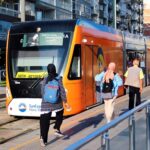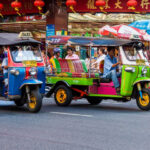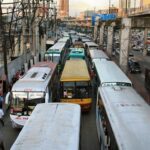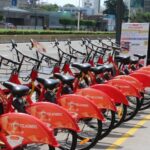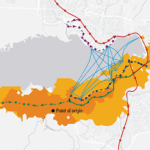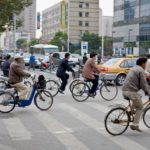Recent Posts by Thet Hein
In the face of rapid urbanization, evolving mobility patterns and the looming climate crisis, the Sustainable Cities Challenge emerges as a pioneering initiative providing a catalytic approach to drive progress. Launched by the Toyota Mobility Foundation in collaboration with WRI ...

Public transport is one of the best, most cost-effective solutions available to address today’s climate and development challenges. Buses and trains can reduce greenhouse gas (GHG) emissions by up to two-thirds per passenger, per kilometer compared to private vehicles. The UN’s latest ...

Over 50% of all transport-related emissions come from high-income countries, where people are more likely to own and depend on personal vehicles. Meanwhile, less than 1% is generated by low-income countries in regions like sub-Saharan Africa and Latin America. In these ...

You start the day frustrated, your alarm clock ringing 30 minutes earlier than usual to try to beat the thousands of other morning commuters out the door. Battling bottlenecks has become your daily drill, from the side road shortcuts to ...

With cities facing population growth, changing work patterns, the climate crisis and ever-widening inequality gaps, improved transportation systems are critical. City governments and local leaders are uniquely positioned to foster innovation to serve public needs. Teaming up with private sector ...

Public transport is a powerful tool to curb climate emissions and to reduce dependence on private motorized vehicles – not to mention to provide more equitable and affordable access to opportunity for riders. But surprisingly few countries have made public transport part ...

Multimodal public transport in Uganda is widespread but largely an informal affair. Kampala, like many African cities, relies on this informal system – comprised largely of taxis (14-seater minibuses) and boda bodas (motorcycle taxis) – to provide much-needed connectivity to ...

This blog is also available in Spanish on IADB.org. For most Latin American and Caribbean cities, public transport is the single most important way to access opportunity and essential services for most urban dwellers, from finding a job to education ...

As some countries creak open in the wake of COVID-19, businesses and workers rightly fear the rough road ahead. Over the past 10 weeks, 40 million U.S. workers have lost their jobs. Researchers at the University of Chicago estimate that ...

The previous Map of the Month showed the power of accessibility data – comparing average travel time to different services in Mexico City – as a proxy to understand inequality in cities. But similar analyses can also help us to ...

Emmanuel leaves his home at 5 a.m. every morning with his two daughters. They take a mini-bus, or “tro-tro,” from their house in Awoshie, a residential neighborhood of Accra, Ghana, to the central business district where Emmanuel works. The trip ...

“Toward Car-Free Cities,” a blog series by WRI Ross Center for Sustainable Cities’ Urban Mobility Team, explores the challenges and opportunities for Transport Demand Management (TDM) strategies. TDM focuses on reducing the demand for private vehicles through combining public policy ...

Urban leaders from around the world are meeting in Quito, Ecuador, October 17-20, 2016, to set the global agenda for the future of cities at the United Nations Conference on Housing and Sustainable Urban Development, known as Habitat III. Through ...

 Phil
Great article! A lot of what I have read here, has already been implemented in cities in the Netherlands, with Denmark the two bicycle countries par...
Phil
Great article! A lot of what I have read here, has already been implemented in cities in the Netherlands, with Denmark the two bicycle countries par...
 Bobby Salvin
I understand why some people wish mobility and GDP weren't connected, but it's wishful thinking. During the pandemic, for instance, when the economy...
Bobby Salvin
I understand why some people wish mobility and GDP weren't connected, but it's wishful thinking. During the pandemic, for instance, when the economy...
 Peace
Let me understand your Position -
We need to make our streets and public spaces dangerous and inhospitable so the disabled and infirm are forced to...
Peace
Let me understand your Position -
We need to make our streets and public spaces dangerous and inhospitable so the disabled and infirm are forced to...






